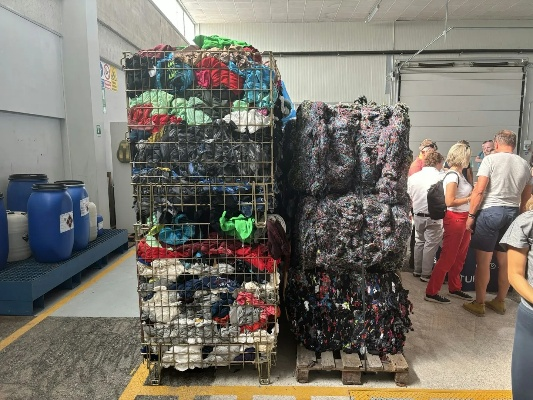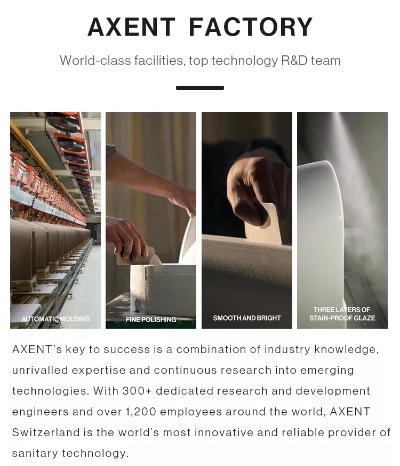European Textile Waste Recycling Rules:A Comprehensive Overview
This article offers a comprehensive overview of European textile waste recycling rules, highlighting the key principles and regulations that govern the process. The focus is on the importance of reducing textile waste, promoting sustainable development, and protecting the environment. The article explains how these rules aim to promote the recycling of textile waste into new products while ensuring that the materials used do not harm the environment. Additionally, it highlights some of the challenges faced in implementing these regulations, including the lack of awareness and resources among stakeholders, as well as the need for further research and innovation to improve the efficiency and effectiveness of the recycling process. Overall, the article provides valuable insights into the current state of European textile waste recycling laws, highlighting the importance of continued effort towards achieving sustainable solutions.
Ladies and Gentlemen,
In an effort to reduce waste, conserve resources, and promote sustainability, the EU has introduced stricter regulations on textile waste management. These rules aim at ensuring that textile scraps are treated in a responsible manner, thereby protecting the environment and contributing to a greener future. In this talk, we will explore these new regulations and their implications for businesses operating in Europe, as well as provide some insights into how they can be effectively implemented.
Firstly, let's discuss the current status of textile recycling in Europe. According to statistics, approximately 40% of textile waste ends up in landfills each year, while only a small fraction is recycled. This highlights the pressing need for improved waste management practices.
Now let's delve into the European Union's latest textile waste recycling regulations. The primary objective of these rules is to ensure that textile scraps are treated in a manner that minimizes environmental harm. To achieve this, the EU has set specific guidelines for the collection, treatment, and disposal of textile waste. For example, textile scraps should be collected by authorized operators within a certain period after being produced, and then sent to designated facilities for processing.

The new regulations also require businesses to adopt sustainable sourcing practices when purchasing textile materials. This means that they should source materials from responsible manufacturers who adhere to environmentally friendly practices and ethical labor standards. Furthermore, businesses should invest in advanced technologies to improve the efficiency of textile recycling processes, thereby reducing costs and minimizing environmental impact.
In addition to these directives, the regulations also include requirements for public awareness and education campaigns aimed at raising awareness about the importance of textile waste management. For instance, the EU aims to educate consumers about the benefits of recycling textile scraps and encourage them to recycle whenever possible.
Let's now look at some examples of successful textile waste recycling initiatives in Europe. For instance, one prominent company in the UK is leading the charge in textile recycling by partnering with local authorities to establish dedicated textile recycling facilities. These facilities process textile scraps from various industries, including garment manufacturing, textile mills, and fashion brands, and convert them into valuable raw materials such as polyester or nylon.
Another interesting case study comes from Germany, where a large textile company has successfully developed a closed-loop system for recycling textile scraps. This system involves sorting textile scraps based on their content (cotton, polyester, etc.) and using them to produce new products such as clothing or home textiles. By doing so, the company not only reduces its waste but also creates new value and revenue streams.
In conclusion, the European Union's latest textile waste recycling regulations represent a significant step forward in promoting sustainable practices in Europe. By implementing these regulations, businesses can contribute to a more sustainable future, minimize environmental harm, and meet the demands of consumers who seek out eco-friendly options. As we move forward, it is crucial that all stakeholders work together to ensure that these regulations are effectively communicated, adopted, and implemented across Europe.
背景介绍
随着全球纺织品的日益增长,纺织品回收问题日益凸显,为了规范纺织品回收行为,欧洲各国相继出台了相关法规,以促进资源的循环利用和环境保护,本文将重点关注欧洲纺织品回收规定的最新动态及其对行业的影响。
欧洲纺织品回收规定概述
定义与目标
欧洲纺织品回收规定旨在规范纺织品回收行为,提高资源利用率,减少环境污染,该规定明确了纺织品回收的范围、标准、流程以及责任主体等。
(1)纺织品来源管理:规定纺织品必须来自合法渠道,禁止任何形式的非法回收。
(2)回收标准:规定了纺织品回收后的质量标准、种类分类等。
(3)回收处理:规定了纺织品回收后的处理方式,包括再生利用、焚烧处理等。
(4)责任主体:明确了纺织品回收过程中的相关责任主体,包括生产商、销售商、回收企业等。
最新案例分析
某欧洲国家纺织品回收实践

近年来,该欧洲国家针对纺织品回收制定了严格的法规,并实施了一系列措施,该国通过建立专门的纺织品回收中心,对纺织品进行分类回收,该国还鼓励纺织企业采用先进的再生利用技术,提高纺织品回收利用率,该国还加强了对回收企业的监管,确保其合规经营。
成功案例分享
在某地区,某纺织企业积极响应欧洲纺织品回收规定,加强了自身的纺织品回收工作,该企业建立了完善的纺织品回收体系,明确了回收流程和标准,该企业还积极采用先进的再生利用技术,提高纺织品回收利用率,该企业还加强了对回收过程的监管和宣传,提高了公众对纺织品回收的认识和参与度,该企业的纺织品回收工作取得了显著成效,实现了资源的循环利用和环境保护。
法规对行业的影响分析
促进资源循环利用
欧洲纺织品回收规定的出台,为纺织行业提供了明确的法规指导,促进了纺织品的循环利用,通过规范纺织品回收行为,提高了纺织品的利用率和再生利用率,减少了资源的浪费和环境污染。
推动行业转型升级
欧洲纺织品回收规定的出台,也为纺织行业带来了转型升级的压力和动力,在环保和可持续发展的要求下,纺织行业需要不断探索新的技术和工艺,提高纺织品的品质和附加值,纺织行业也需要加强自身的环保意识和社会责任意识,推动行业的可持续发展。
建议与展望
针对欧洲纺织品回收规定的发展趋势和未来展望,我们提出以下建议:
加强法规宣传和培训
为了更好地实施欧洲纺织品回收规定,需要加强法规宣传和培训工作,通过宣传和教育,提高公众对纺织品回收的认识和参与度,让更多的人了解并参与到纺织品回收工作中来,还需要加强对相关从业人员的培训和管理,提高其专业素质和技能水平。
推动技术创新和升级
在欧洲纺织品回收规定的推动下,纺织行业需要不断探索新的技术和工艺,提高纺织品的品质和附加值,还需要加强自身的环保意识和社会责任意识,推动行业的可持续发展,纺织行业需要加强技术研发和创新,提高纺织品的环保性能和可持续性。
总结与展望
欧洲纺织品回收规定的最新动态及其对行业的影响是积极的,通过规范纺织品回收行为、提高资源利用率、减少环境污染等措施,欧洲纺织行业得到了长足的发展和进步,欧洲纺织行业需要继续加强法规宣传和培训、推动技术创新和升级等方面的工作,实现更加可持续的发展和进步。
Articles related to the knowledge points of this article:
Exploring the Evolution of Shaoxing Rus Textile Industry
Exploring the Artisanal Spirit of Yixing,Chinas Quiet Textile Capital



